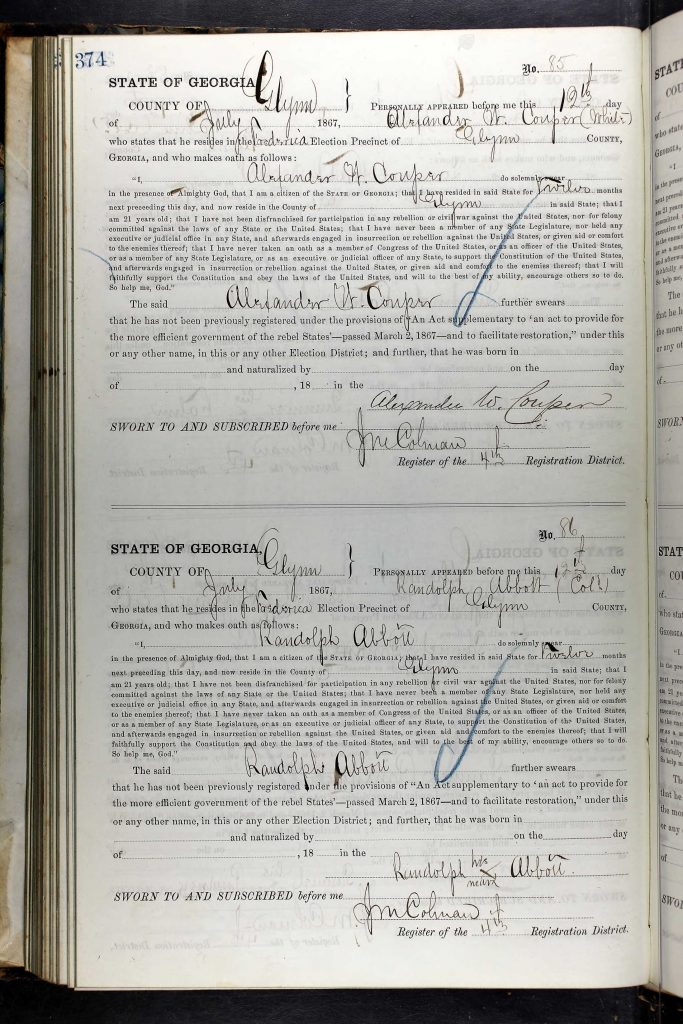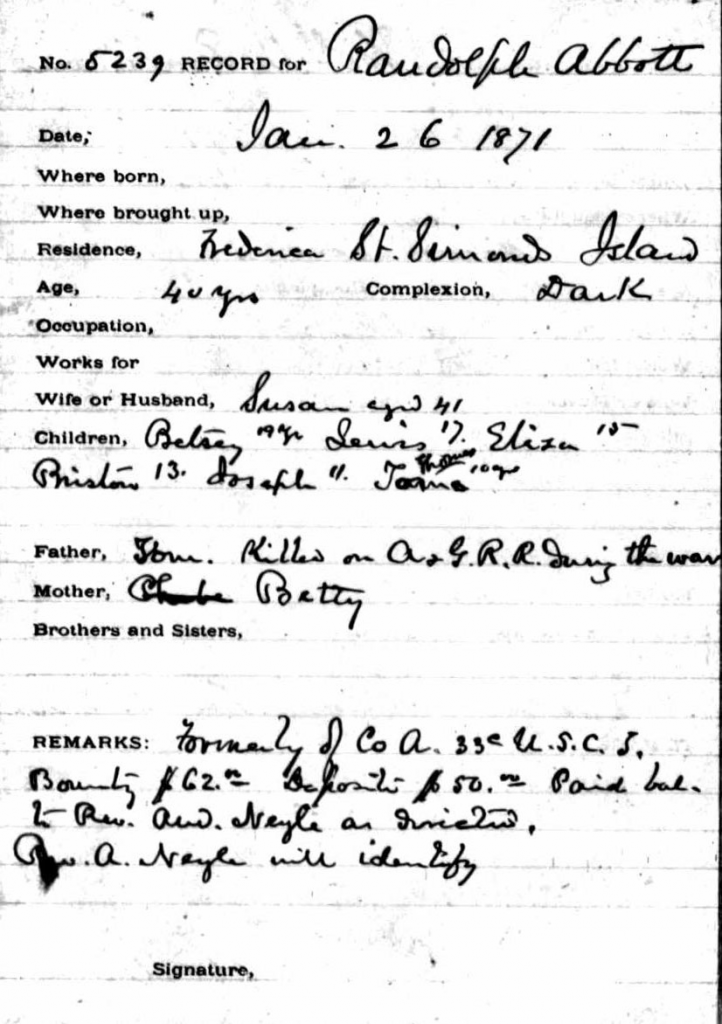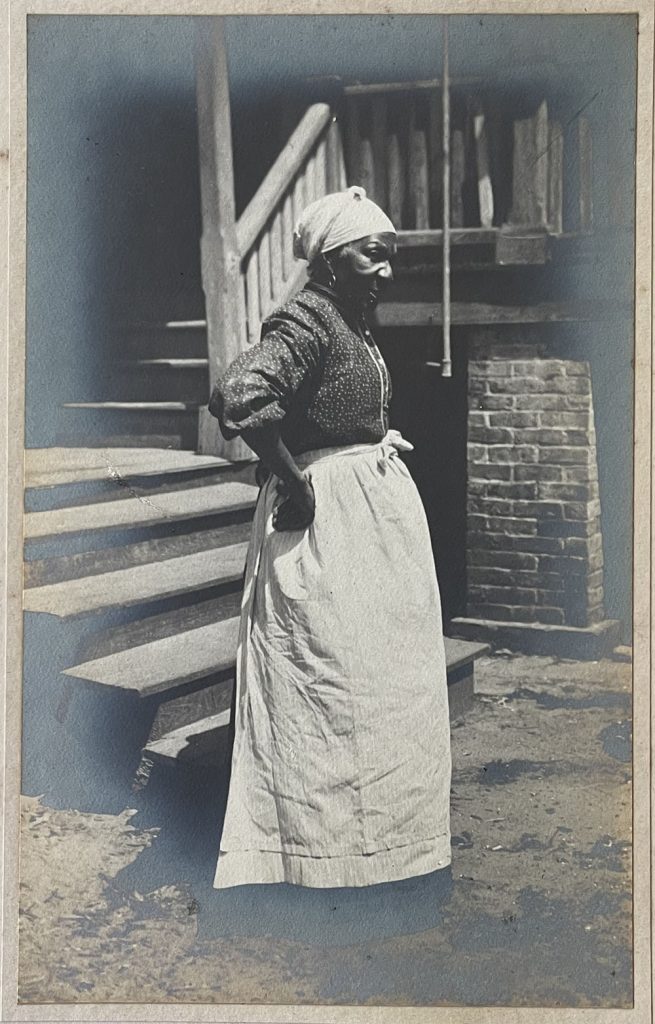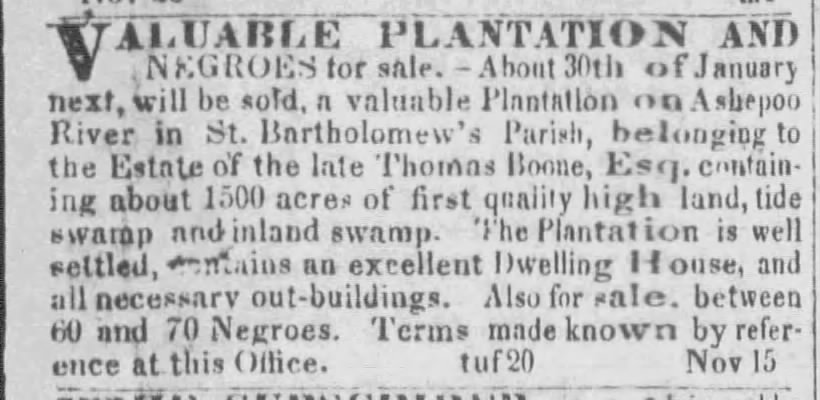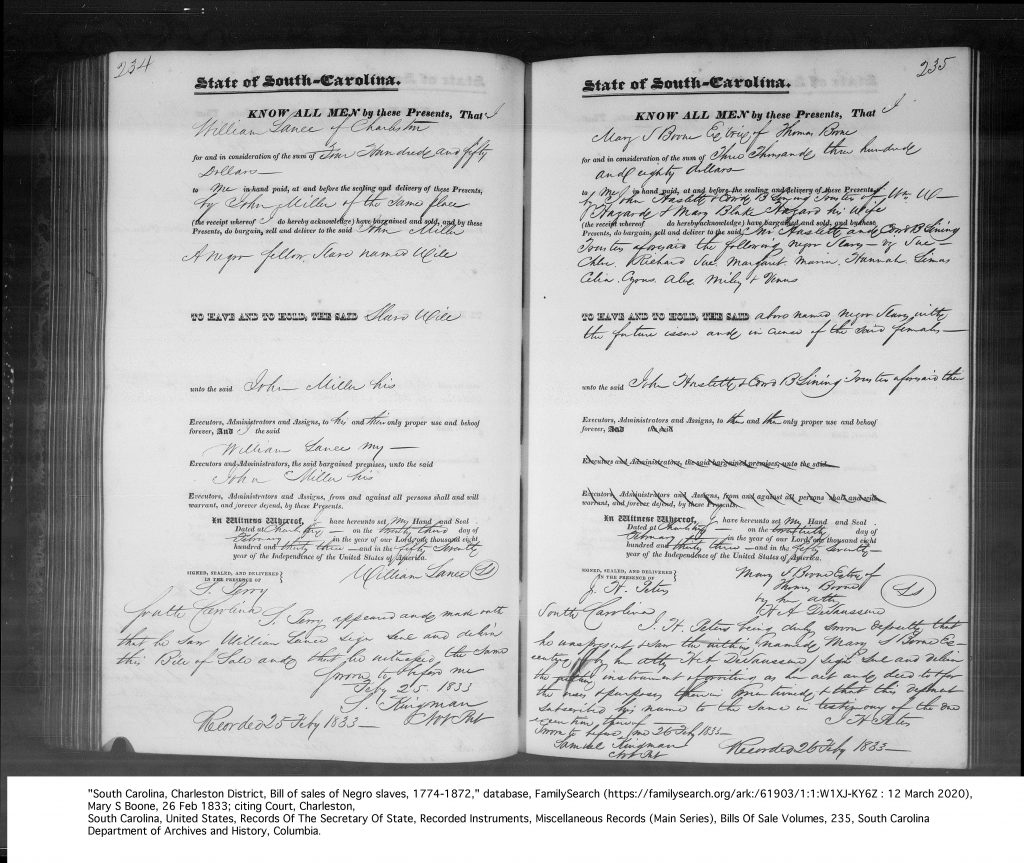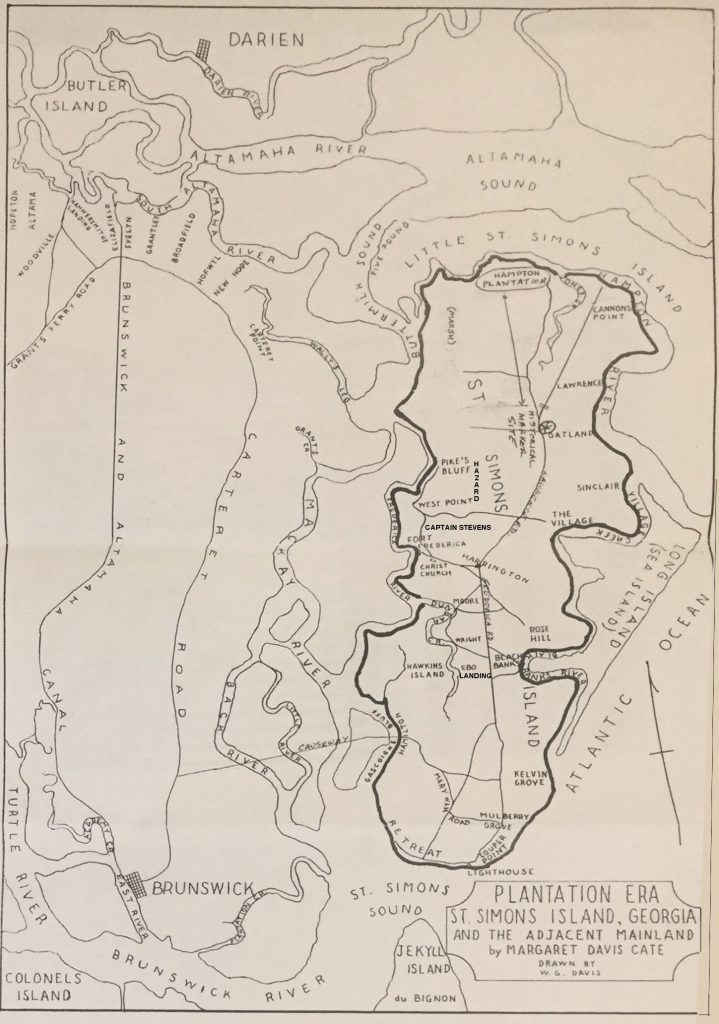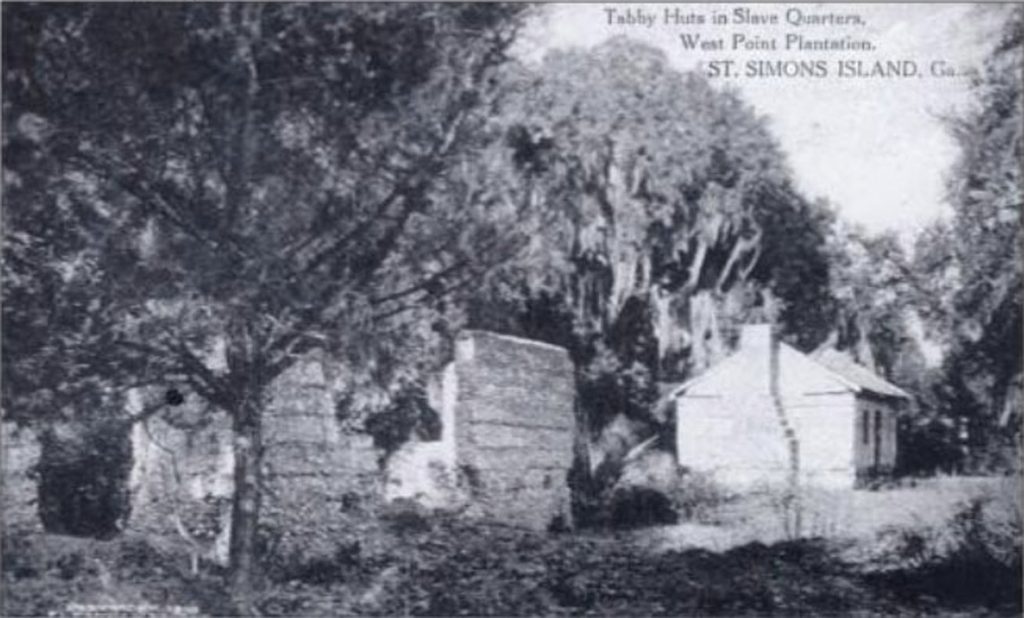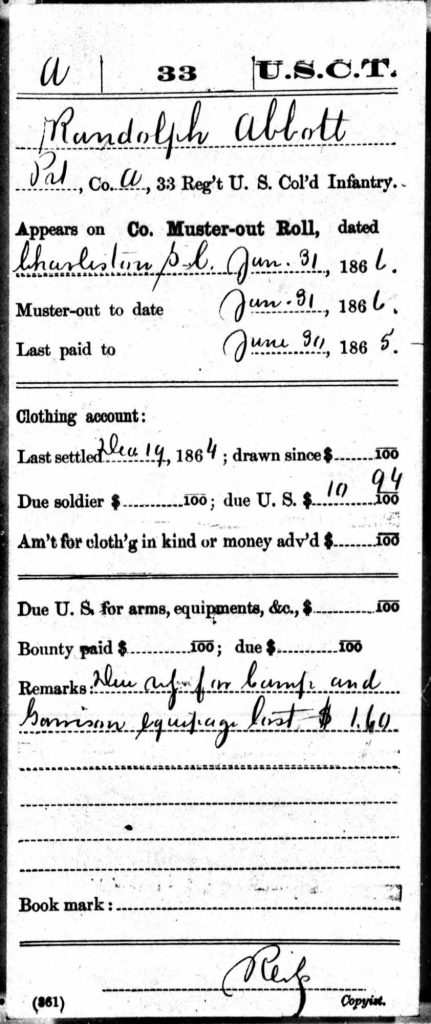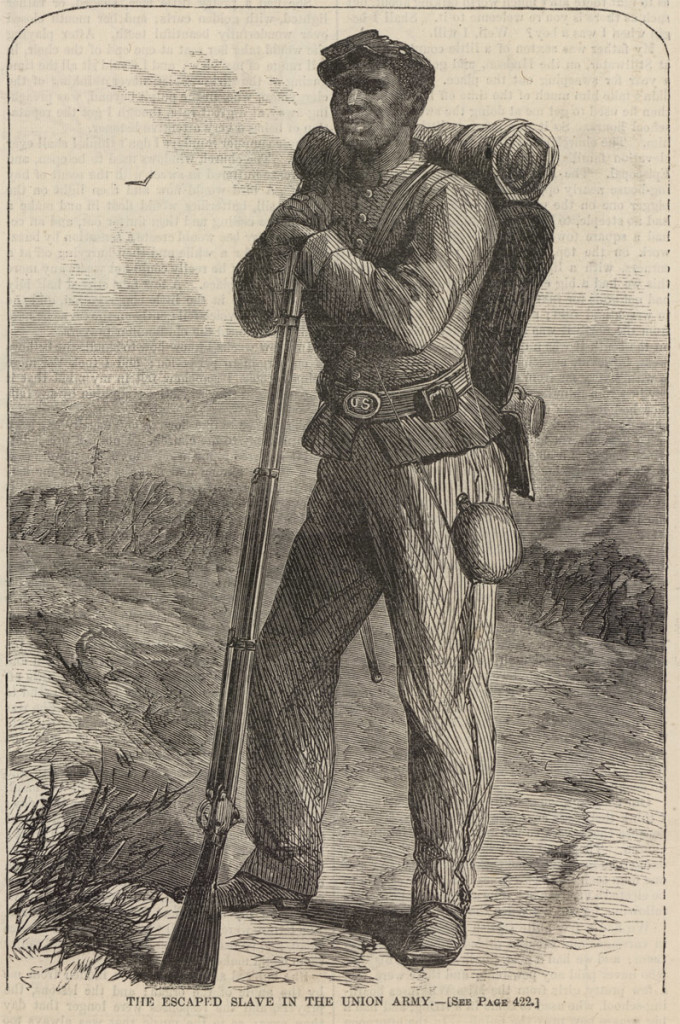This is the 2nd post about the life of Susan Richardson Abbott. You can read part one here Part 1 Susan Richardson Abbott 1829 to 1866. Click on any image to enlarge in a different window.
In 1869 The First African Baptist church put up a new building. The women raised the money and fed the construction workers while the building was constructed. The The leader, Rev. Andrew Neal (Nyle), served as pastor for 28 years. Under his leadership in 1869, the beautiful framed, front gabled church building was artfully constructed with round arch windows, and an off center, pyramidal roof steeple by former slaves of the St. Simons plantations. First African Baptist church website.
1870 Census

In the 1870 Census, Susan and Randolph Abbott and their six children lived in Glynn County Georgia. The parents and two oldest children worked on the farm. Neither of the parents could read or write. The four children over age nine had attended school during the past year and were literate.
Randolph and Susan Abbott were both listed as 36 years old. Lizzie Abbot, 15 and Eliza, 13 both worked on the farm, attended school and were able to read. Bristol, 12 and Louis 11 were not working and attended school they could also read.
Thomas, 9 and Joseph, 7 were at home and not yet attending school.
Susan’s brother Richard Richardson and his wife Dorcus lived in the next house with their four children.
Freedman’s Bank Records 1871 and 1873
On January 26, 1871, Randolph Abbott opened an account with the Freedman’s Bank. He was described as 40 years old with a dark complexion. His wife was Susan, age 41. Their six children were named. Betsey, 19; Lewis, 17; Eliza, 15; Bristol 13; Joseph 11 and Thomas 10. His father’s name was Tom. He died on the Atlantic & Gulf Railroad during the Civil war. His mother’s name was Betty.
He was formerly of CO A 33c, United States Colored Troops. He had received a bounty of $62. $50 was deposited. . The pastor of their church, First African Baptist Church, Rev. Andrew Neyle identified them. First African Baptist Church was founded in 1859 by enslaved people who wanted their own church. Randolph Abbott died later that year.
United States, Freedman’s Bank Records, 1865-1874
(Familysearch.com)
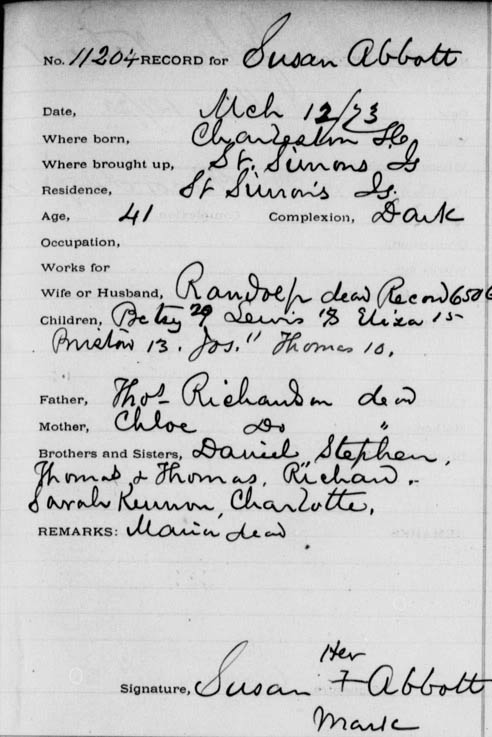
On March 12, 1873 Susan Abbott, now widowed, signed up for an account at the Freedman’s Bank. She states she was born in Charleston, South Carolina and now resides on St Simons Island. She was 41 years old and had a dark complexion. Her husband, Randolph, was deceased. The children are again listed. Betsy 29; Lewis 18; Eliza 15; Briston 13; Joseph 11; and Thomas 10. Her father’s name was Thomas Richardson and her mother was Chloe. Both were deceased. She had eight sisters and brothers. One, Maria, was deceased. The others were Daniel, Stephen, Thomas, Richard, Sarah Kennon and Charlotte
United States, Freedman’s Bank Records, 1865-1874
(Familysearch.com)
The ages on various records are inconsistent because people often did not know exactly when they were born or how old they were.
United States, Freedman’s Bank Records, 1865-1874 (Familysearch.com)
Freedmen’s Bank Fails, Devastating Black Community
The Freedmen’s Savings and Trust Company, more commonly referred to as The Freedmen’s Bank, failed in June 1874, taking with it millions of dollars in Black wealth. The bank was first incorporated on March 3, 1865, the same day the Freedmen’s Bureau was created, and formed to help previously enslaved people economically transition to freedom.
During the next several years, Rev. Nyle of First African Baptist Church, officiated at the marriages of Susan Abbott’s children.
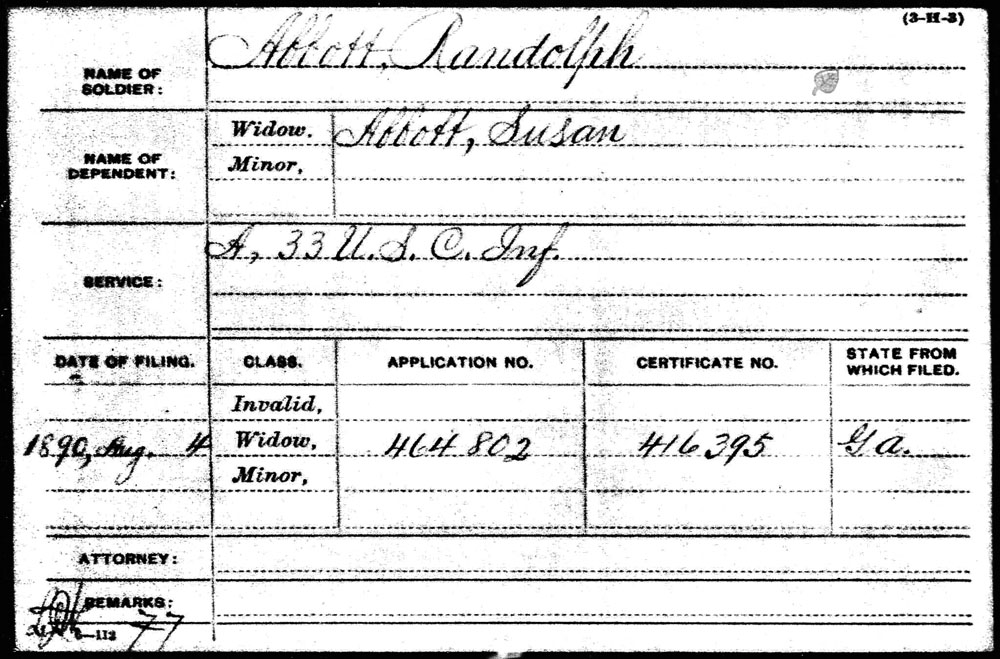
Susan Abbott was eligible for a pension as the widow of a soldier who fought in the Civil War. She filed for her widow’s pension in in 1890. Apparently she received it, according to her obituary. When the National Archives reopens after the pandemic, I will be able to order a copy of the pension file. There is usually a wealth of information available in the files that contain the transcribed words of the person applying and their witnesses. Some of the people who were enslaved on the Hazzard plantation with her should have testimony swearing that she and Randolph were married and if there was a ceremony or celebration and about the birth of the children.
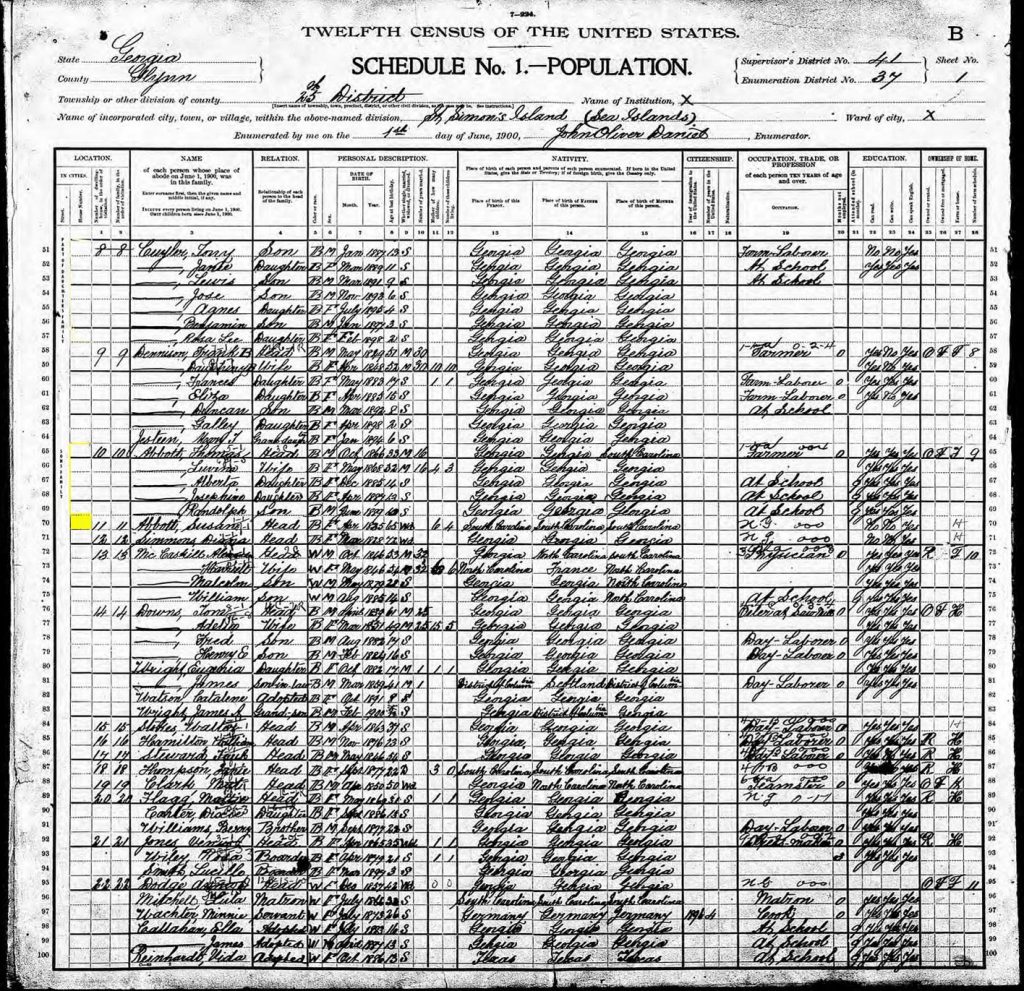
In the 1900 census Susan Abbott was enumerated twice. On June 1, 1900 she was enumerated next door to her Son Thomas and his family on St Simons Island. She was listed as 65, living in a house (as opposed to a farm). She had given birth to six children and four were still living. Her daughter Betsey and her family and son Joe and his family lived on the same road. She was still unable to read or write but her children and grandchildren were literate and the grandchildren of school age attended school. They owned their own farms free of mortgage.

She was also enumerated as housekeeper living with the white Crovatt family in the city of Brunswick, on June 2, 1900. A. J. Crovatt was 41, his wife Mary was 40. There were two sons, William 18 and Alfred 17 and one daughter Mary L. who was 14. All of the children were in school.
Susan Abbott was about 80 years old when she died in 1909. She lived a long life and came from slavery to freedom and saw her children and grandchildren grow up to become literate property owners.
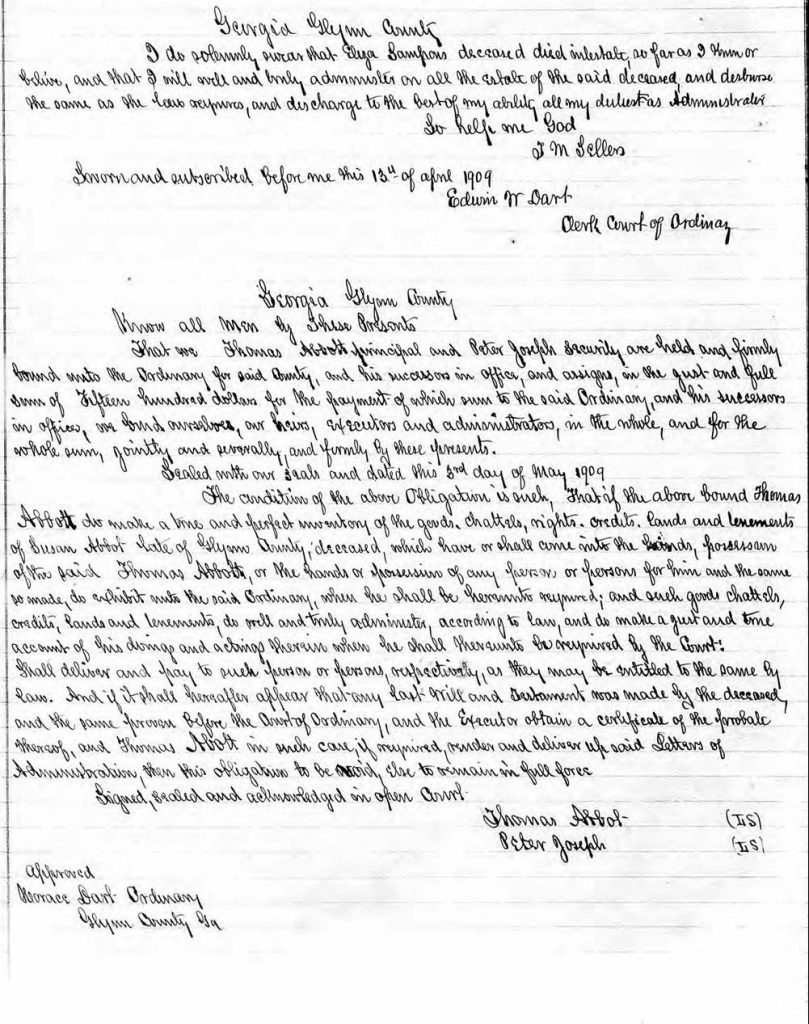
Georgia Glynn County
Know all men by these presents that we Thomas Abbott principal and Peter Joseph security are held and firmly bound into the Ordinary for said county, and his successors in office and assigns, in the just and full sum of the fifteen hundred dollars full sum of fifteen hundred dollars for the payment of which sum to the said Ordinary, and his successors in office, we bond ourselves, our heirs, executors and administrators in the whole, and for the whole sum, jointly and severally and firmly by these presents.
Sealed with our seals and dated this 3rd day of May 1909.
The condition of the above obligation is such, that if the above bound Thomas Abbott do make a time and perfect inventory of the goods, chattels, rights, credits , lands tenements of Susan Abbot late of Glynn County, deceased, which have or shall come into the hands, possessions of the said Thomas Abbott, or the hands of any person or persons for him and the same so made, do exhibit into the said Ordinary, when he shall be here until required; and such good chattels, credits, lands and tenements, do well and truly administer, according to the law, and to make a great and true account of his doings and acting there in when he shall thereunto be required by the court: Shall deliver and pay to such person or persons, respectively, as they may be entitled to the same by law, and if it shall here after appear that my last will and testament was made by the deceased, and the same proven before the court of ordinary, and the executor obtain a certificate of the probate there of and Thomas Abbott in such case, if required, render and deliver up said letters of administration, the this obligation to be void else to remain in full force signed, sealed and acknowledge in open court.
Thomas Abbot
Peter Joseph
Horace Dart Ordinary
Glynn County Georgia
Click to read Part 1 Susan Richardson Abbott 1829-1909
